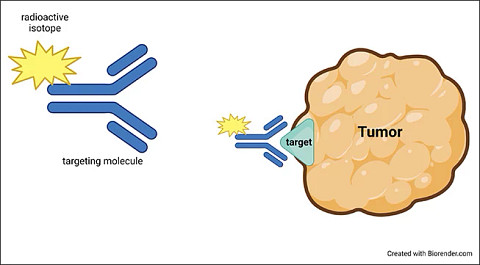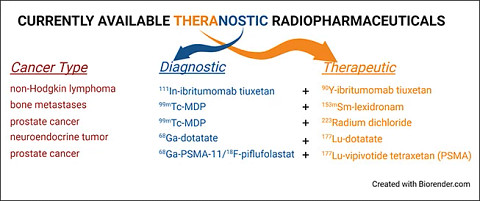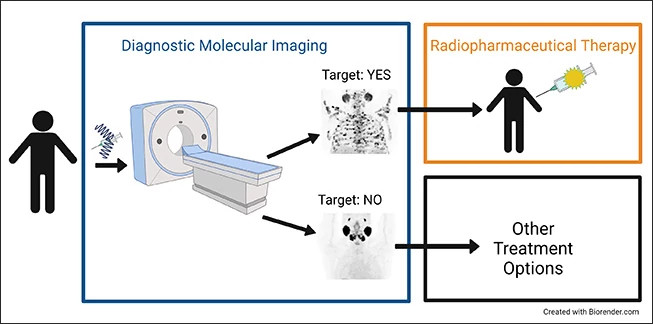Theranostics is an advanced medical technology that uses radioactive medicine (called radiopharmaceuticals) to combine diagnostic imaging and therapy. This combination of diagnosis and therapy provides our patients with a customized and targeted treatment option.
Radiopharmaceuticals have two parts: a targeting part and a radioactive part. The targeting part binds to a specific target on the tumor cell surface. Then, the radioactive part releases energy that either creates images (diagnostic imaging) or destroys cancer cells (therapy).

Several theranostic radiopharmaceuticals are now approved for different cancer types. Others are currently being tested in clinical trials:

How Theranostics Works
Theranostics is a way to provide personalized medicine through targeted diagnosis and therapy. Theranostics uses pairs of diagnostic and therapeutic radiopharmaceuticals (or radioactive medicine) to identify and treat particular tumors.
First, a diagnostic imaging test determines if a specific target is present on a patient’s cancer cells. If the imaging test shows the target on the cancer cells, the patient may then be eligible to receive targeted radiopharmaceutical therapy.



